
What is syncope?
Fainting—also called syncope—occurs when the brain experiences a sudden decrease in blood or oxygen levels (or both) due to a drop in blood pressure and heart rate. Thirty-five percent of people will have at least one fainting episode in their lifetime, either due to abnormal heart rhythms, overheating, or other causes, according to Julian Stewart, MD, professor of pediatric cardiology at New York Medical College in Hawthorne, New York. And feeling faint can happen to both children and adults. Know these symptoms of fainting and take the proper precautions to avoid injury and ensure that a one-time fainting spell doesn’t turn into a true medical emergency. Learn more about the reasons healthy people faint, and how to treat them.

You feel lightheaded or dizzy
If you’ve ever stood up a little too fast and felt your head spin for a moment, you have experienced a slight version of syncope. “When you’re lying down, blood is uniformly distributed, and when you stand up, blood rapidly falls due to gravity,” says Dr. Stewart. As blood moves away from your brain when you stand, your blood pressure drops, and you begin feeling faint. If you often experience lightheadedness when getting to your feet, Dr. Stewart recommends squeezing the muscles in your lower body, such as your thigh, calf, and glutes, before you stand. This will pump blood back to the upper half of your body, preventing the quick drop in blood pressure once you’re upright. Check out some more simple home remedies for dizziness.
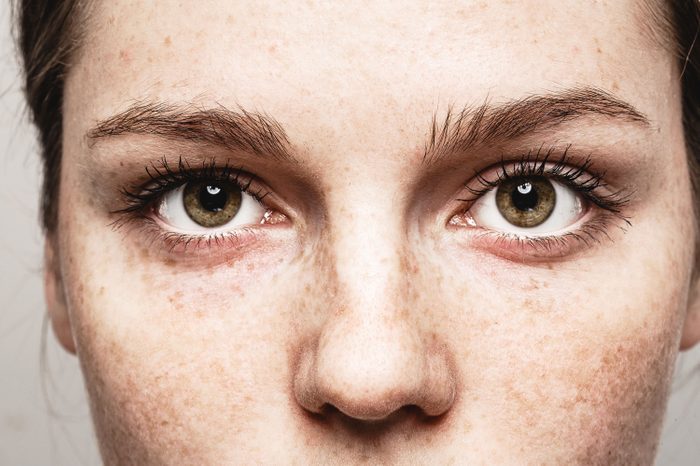
You see spots in front of your eyes
Your eyes could provide the first clue that you are about to faint. Because your eyeball is pressurized, those blood vessels collapse first when blood moves downward, says Dr. Stewart. If you start seeing spots or bright flashes in front of your eyes, lie down or sit and put your head between your knees. This will direct the blood flow back to your brain, as well as protect your head and neck if you lose consciousness.
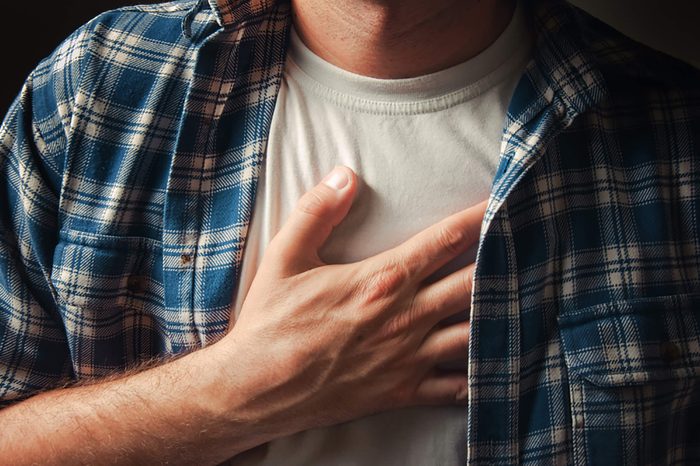
You begin to hyperventilate
“Before most people faint, they will hyperventilate,” says Dr. Stewart. As the brain detects lower levels of oxygen, your body will trigger you to start breathing faster in order to suck in more life-saving air. If you begin to hyperventilate while feeling faint, find a place to sit or lie down, close your eyes, and place a hand on your belly. Then focus on taking slow, deep breaths, expanding your stomach like a balloon as you inhale through your nose and exhale through your mouth. The additional oxygen will nourish every cell in your body and ease your brain’s distress.
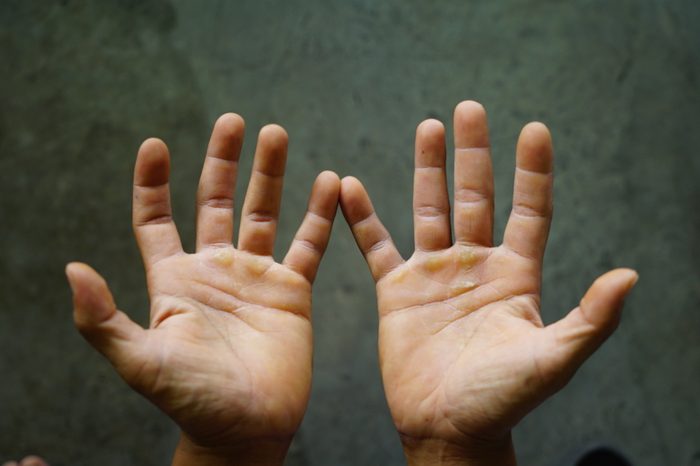
Your fingertips or lips tingle
The hyperventilating that often precedes fainting can cause calcium levels in your bloodstream to suddenly drop. When that happens, you might feel tingling or numbness in your extremities—especially in your fingertips and around your lips—as the vital mineral moves away from those areas. Loosen your belt, collar, or any other constricting clothing before you sit down to open your airways and allow your blood to circulate, sending oxygen and blood back up to your brain. Here are the scientific explanations behind some more quirky body reactions like this.

You feel warm
If you are about to faint, you might experience what is called a “head rush,” or a warm sensation flowing through your body. Turns out, what you’re actually feeling is a quick increase in blood flow as your heart compensates for the lack of blood and oxygen in your brain. “The body is actually getting a bump up in blood flow to the wrong places” like your arms and legs, says Dr. Stewart. If you’re feeling faint and breaking out in a sweat, find a cool place in the shade to sit down and sip on some water; doing so can return your heart rate to a normal pace. Watch out for these other silent signs you’re not as healthy as you think.
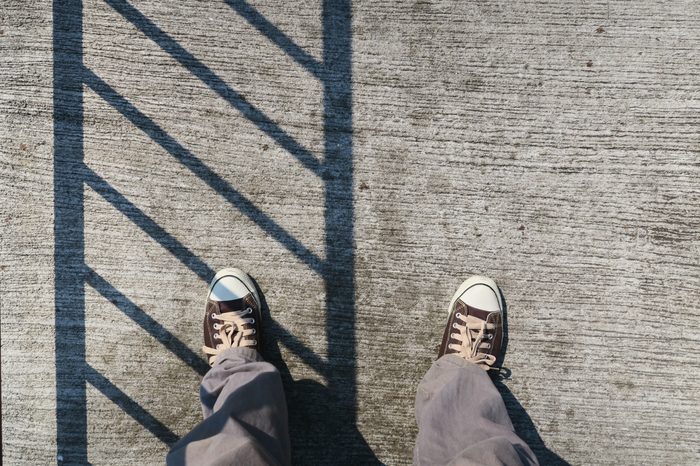
You spend a long time standing
When you stand, your heart must work harder to pump blood up to your brain. “Our heart is above our working muscles, and that’s not the best situation,” says Dr. Stewart. Since more blood flow is directed toward your arms and legs while you stand, your brain might start losing its essential power source if you’re upright for too long. Try to find a seat so your heart can rest for a little bit.
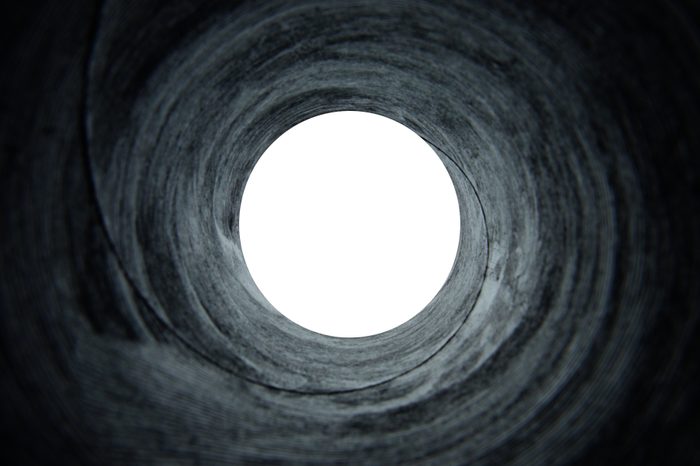
You have tunnel vision
If your peripheral vision tunnels, it’s a sign of that your blood pressure has dropped, which could lead to a fainting spell. In this situation, Dr. Stewart says, don’t force yourself to keep standing up or try to blink it away. Instead, find a chair and sit or lie down immediately. It’s the best way to make any of these things safe in case you collapse, he says. On the other hand, these are the symptoms that seem scary but are actually totally harmless most of the time.

You feel nauseous
Feeling nauseated can be a sign of many conditions (including pregnancy, food poisoning, and alcohol toxicity), but if your nausea is accompanied by other symptoms of syncope such as tunnel vision or hyperventilation, sit or lie down and seek medical help immediately. Dehydration could trigger both nausea and fainting spells, so be sure to drink fluids and rest in a cool area away from the sun.
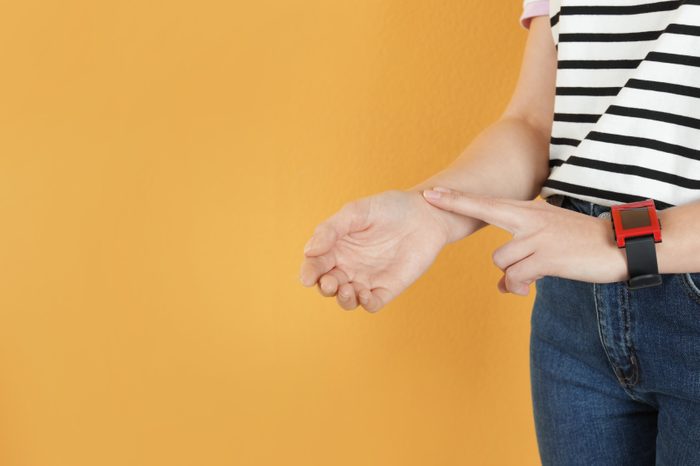
You have a blueish tint to your skin
A slow, weak pulse means that blood isn’t reaching all the way to your outer skin, making it look pale (and sometimes slightly blue), according to the Mayo Clinic. When you sit down, rub the muscles in your arms and legs in slow circles to jump-start your circulation and return your blood pressure to a normal level. Next, learn some more medical reasons you might feel dizzy (that aren’t syncope).
